 What: Fourth annual Life Raft Debate
Who: UBC professors debate to win a seat in a time machine and change history
When: Wednesday, January 26, beginning at 7 pm
Venue: Online, virtual event
Once again, UBC Okanagan professors are being called upon to share their expertise and help save the world. But this year, it involves going back in time to right the wrongs of humanity.
The annual Life Raft Debate is a fun way to showcase the talents of professors by using an “end-of-the-world” premise, explains Lyndsey Chesham, Society of Scholars Program Assistant and a fourth-year microbiology student. The professors must do their best to sway the audience to earn the last seat on the life raft. However, this year it’s a seat in a time machine.
“For this year’s debate, humans have made an irrevocable mistake leading to our demise,” Chesham says. “Our only option is an experimental time machine capable of sending someone on a one-way trip to the first known human civilization.”
The catch? There is only one seat in the time machine. Not only must the time traveller win the debate, they must—without any modern technology—be able to influence society to not make the same mistakes. It’s up to them to prevent the downfall of the human race.
“Our traveller must assert the importance of their discipline in order to lead the ancient society, fix the mistakes of the past, and lead us to a brighter, more promising future,” adds Chesham. “But we must also question if it is even worth sending anyone back at all. It’s up to our audience to decide who we send, or if we even bother.”
Competing for the chance to time travel include chemistry’s Dr. Tamara Freeman, creative writing’s Michael V. Smith, engineering’s Dr. Vicki Komisar, psychology’s Dr. Liane Gabora and management’s Tamara Ebl. Associate Dean of Research Dr. Dean Greg Garrard will play the role of devil’s advocate, suggesting no one deserves to go back in time.
After all the words are spoken, the audience—using Zoom technology—will decide if someone does go back and restart society. And who it will be.
“The Society of Scholars brought this student-led event to UBCO to give students a chance to get to know their professors through the scope of a light-hearted and fun event,” adds Chesham. “Our debaters get very passionate and it is wonderful to see the professors speak about their life’s work so enthusiastically.”
New this year will be opening remarks from UBC President Santa Ono and closing remarks from UBCO’s Deputy Vice-Chancellor and Principal Lesley Cormack.
The Life Raft Debate takes place Wednesday, January 26 at 7 pm. It is a free, virtual presentation and follows with a question and answer session. To register or find out more, visit: students.ok.ubc.ca/life-raft
What: Fourth annual Life Raft Debate
Who: UBC professors debate to win a seat in a time machine and change history
When: Wednesday, January 26, beginning at 7 pm
Venue: Online, virtual event
Once again, UBC Okanagan professors are being called upon to share their expertise and help save the world. But this year, it involves going back in time to right the wrongs of humanity.
The annual Life Raft Debate is a fun way to showcase the talents of professors by using an “end-of-the-world” premise, explains Lyndsey Chesham, Society of Scholars Program Assistant and a fourth-year microbiology student. The professors must do their best to sway the audience to earn the last seat on the life raft. However, this year it’s a seat in a time machine.
“For this year’s debate, humans have made an irrevocable mistake leading to our demise,” Chesham says. “Our only option is an experimental time machine capable of sending someone on a one-way trip to the first known human civilization.”
The catch? There is only one seat in the time machine. Not only must the time traveller win the debate, they must—without any modern technology—be able to influence society to not make the same mistakes. It’s up to them to prevent the downfall of the human race.
“Our traveller must assert the importance of their discipline in order to lead the ancient society, fix the mistakes of the past, and lead us to a brighter, more promising future,” adds Chesham. “But we must also question if it is even worth sending anyone back at all. It’s up to our audience to decide who we send, or if we even bother.”
Competing for the chance to time travel include chemistry’s Dr. Tamara Freeman, creative writing’s Michael V. Smith, engineering’s Dr. Vicki Komisar, psychology’s Dr. Liane Gabora and management’s Tamara Ebl. Associate Dean of Research Dr. Dean Greg Garrard will play the role of devil’s advocate, suggesting no one deserves to go back in time.
After all the words are spoken, the audience—using Zoom technology—will decide if someone does go back and restart society. And who it will be.
“The Society of Scholars brought this student-led event to UBCO to give students a chance to get to know their professors through the scope of a light-hearted and fun event,” adds Chesham. “Our debaters get very passionate and it is wonderful to see the professors speak about their life’s work so enthusiastically.”
New this year will be opening remarks from UBC President Santa Ono and closing remarks from UBCO’s Deputy Vice-Chancellor and Principal Lesley Cormack.
The Life Raft Debate takes place Wednesday, January 26 at 7 pm. It is a free, virtual presentation and follows with a question and answer session. To register or find out more, visit: students.ok.ubc.ca/life-raft
 What: Fourth annual Life Raft Debate
Who: UBC professors debate to win a seat in a time machine and change history
When: Wednesday, January 26, beginning at 7 pm
Venue: Online, virtual event
Once again, UBC Okanagan professors are being called upon to share their expertise and help save the world. But this year, it involves going back in time to right the wrongs of humanity.
The annual Life Raft Debate is a fun way to showcase the talents of professors by using an “end-of-the-world” premise, explains Lyndsey Chesham, Society of Scholars Program Assistant and a fourth-year microbiology student. The professors must do their best to sway the audience to earn the last seat on the life raft. However, this year it’s a seat in a time machine.
“For this year’s debate, humans have made an irrevocable mistake leading to our demise,” Chesham says. “Our only option is an experimental time machine capable of sending someone on a one-way trip to the first known human civilization.”
The catch? There is only one seat in the time machine. Not only must the time traveller win the debate, they must—without any modern technology—be able to influence society to not make the same mistakes. It’s up to them to prevent the downfall of the human race.
“Our traveller must assert the importance of their discipline in order to lead the ancient society, fix the mistakes of the past, and lead us to a brighter, more promising future,” adds Chesham. “But we must also question if it is even worth sending anyone back at all. It’s up to our audience to decide who we send, or if we even bother.”
Competing for the chance to time travel include chemistry’s Dr. Tamara Freeman, creative writing’s Michael V. Smith, engineering’s Dr. Vicki Komisar, psychology’s Dr. Liane Gabora and management’s Tamara Ebl. Associate Dean of Research Dr. Dean Greg Garrard will play the role of devil’s advocate, suggesting no one deserves to go back in time.
After all the words are spoken, the audience—using Zoom technology—will decide if someone does go back and restart society. And who it will be.
“The Society of Scholars brought this student-led event to UBCO to give students a chance to get to know their professors through the scope of a light-hearted and fun event,” adds Chesham. “Our debaters get very passionate and it is wonderful to see the professors speak about their life’s work so enthusiastically.”
New this year will be opening remarks from UBC President Santa Ono and closing remarks from UBCO’s Deputy Vice-Chancellor and Principal Lesley Cormack.
The Life Raft Debate takes place Wednesday, January 26 at 7 pm. It is a free, virtual presentation and follows with a question and answer session. To register or find out more, visit: students.ok.ubc.ca/life-raft
What: Fourth annual Life Raft Debate
Who: UBC professors debate to win a seat in a time machine and change history
When: Wednesday, January 26, beginning at 7 pm
Venue: Online, virtual event
Once again, UBC Okanagan professors are being called upon to share their expertise and help save the world. But this year, it involves going back in time to right the wrongs of humanity.
The annual Life Raft Debate is a fun way to showcase the talents of professors by using an “end-of-the-world” premise, explains Lyndsey Chesham, Society of Scholars Program Assistant and a fourth-year microbiology student. The professors must do their best to sway the audience to earn the last seat on the life raft. However, this year it’s a seat in a time machine.
“For this year’s debate, humans have made an irrevocable mistake leading to our demise,” Chesham says. “Our only option is an experimental time machine capable of sending someone on a one-way trip to the first known human civilization.”
The catch? There is only one seat in the time machine. Not only must the time traveller win the debate, they must—without any modern technology—be able to influence society to not make the same mistakes. It’s up to them to prevent the downfall of the human race.
“Our traveller must assert the importance of their discipline in order to lead the ancient society, fix the mistakes of the past, and lead us to a brighter, more promising future,” adds Chesham. “But we must also question if it is even worth sending anyone back at all. It’s up to our audience to decide who we send, or if we even bother.”
Competing for the chance to time travel include chemistry’s Dr. Tamara Freeman, creative writing’s Michael V. Smith, engineering’s Dr. Vicki Komisar, psychology’s Dr. Liane Gabora and management’s Tamara Ebl. Associate Dean of Research Dr. Dean Greg Garrard will play the role of devil’s advocate, suggesting no one deserves to go back in time.
After all the words are spoken, the audience—using Zoom technology—will decide if someone does go back and restart society. And who it will be.
“The Society of Scholars brought this student-led event to UBCO to give students a chance to get to know their professors through the scope of a light-hearted and fun event,” adds Chesham. “Our debaters get very passionate and it is wonderful to see the professors speak about their life’s work so enthusiastically.”
New this year will be opening remarks from UBC President Santa Ono and closing remarks from UBCO’s Deputy Vice-Chancellor and Principal Lesley Cormack.
The Life Raft Debate takes place Wednesday, January 26 at 7 pm. It is a free, virtual presentation and follows with a question and answer session. To register or find out more, visit: students.ok.ubc.ca/life-raft 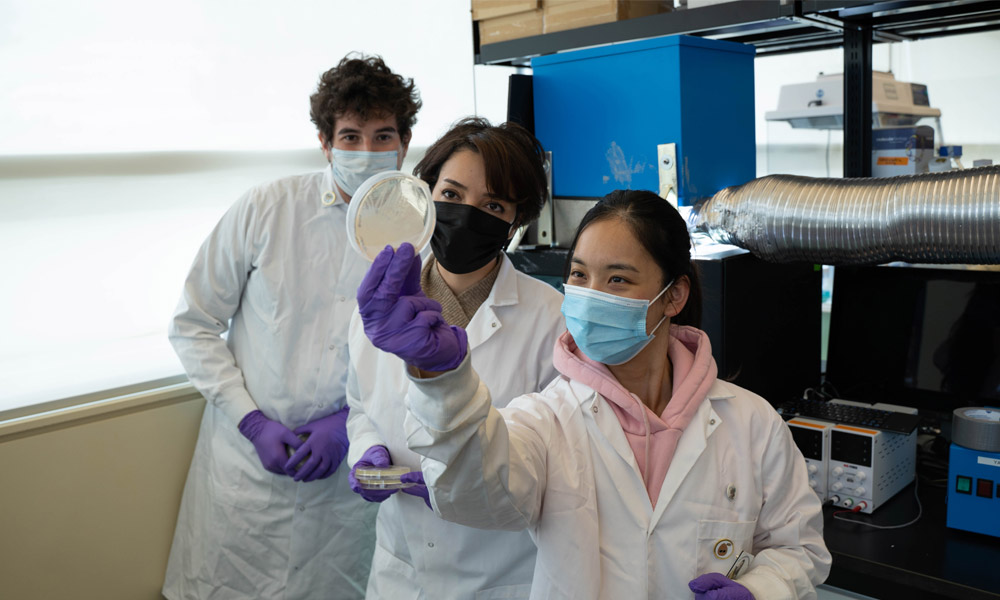
UBC Okanagan Assistant Professor Dr. Sepideh Pakpour, along with student researchers Enrique Calderon and Rita Lam, examine a sample beside the natural light experimentation chamber. Their research suggests light through smart windows can work as a natural disinfectant against many illnesses including E.Coli and methicillin-resistance Staphylococcus aureus.
About Mitacs
Mitacs is a not-for-profit organization that fosters growth and innovation in Canada by solving business challenges with research solutions from academic institutions.About View
View is the leader in smart building technologies that transform buildings to improve human health and experience, reduce energy consumption and carbon emissions, and generate additional revenue for building owners. View Smart Windows use artificial intelligence to automatically adjust in response to the sun, increasing access to natural light and unobstructed views while eliminating the need for blinds and minimizing heat and glare. Every View installation includes a cloud-connected smart building platform that can be extended to reimagine the occupant experience. View is installed and designed in over 90 million square feet of buildings including offices, hospitals, airports, educational facilities, hotels and multifamily residences. For more information, please visit view.com.
UBCO research has determined that during the pandemic, online grocery shopping habits have changed considerably, but only for certain demographics. Photo by Pickawood on Unsplash
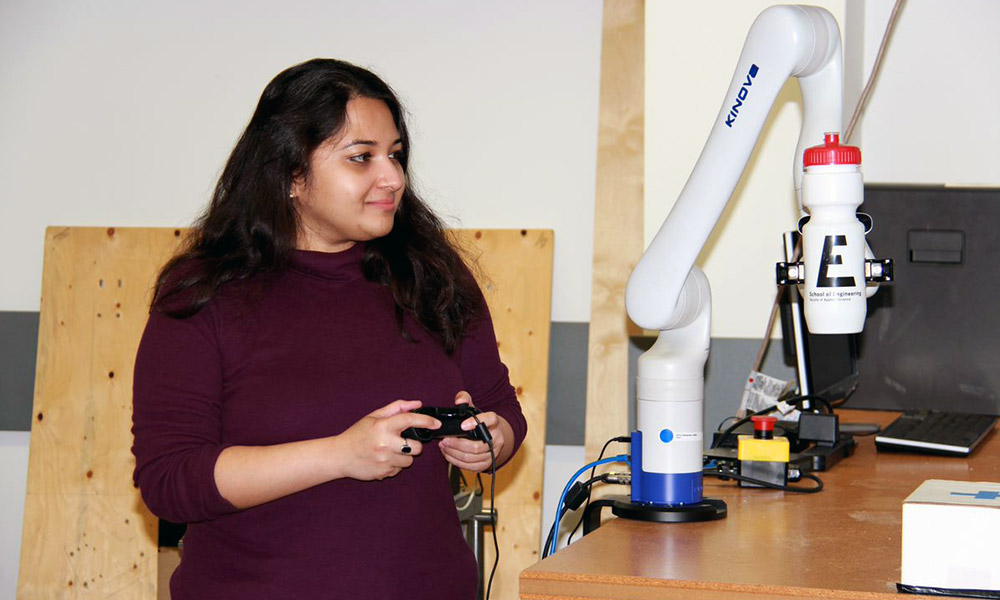
UBCO doctoral student Debasmita Mukherjee, with the School of Engineering’s Advanced Control and Intelligent Systems Laboratory, is looking at ways to program robots so they can work safely alongside people.
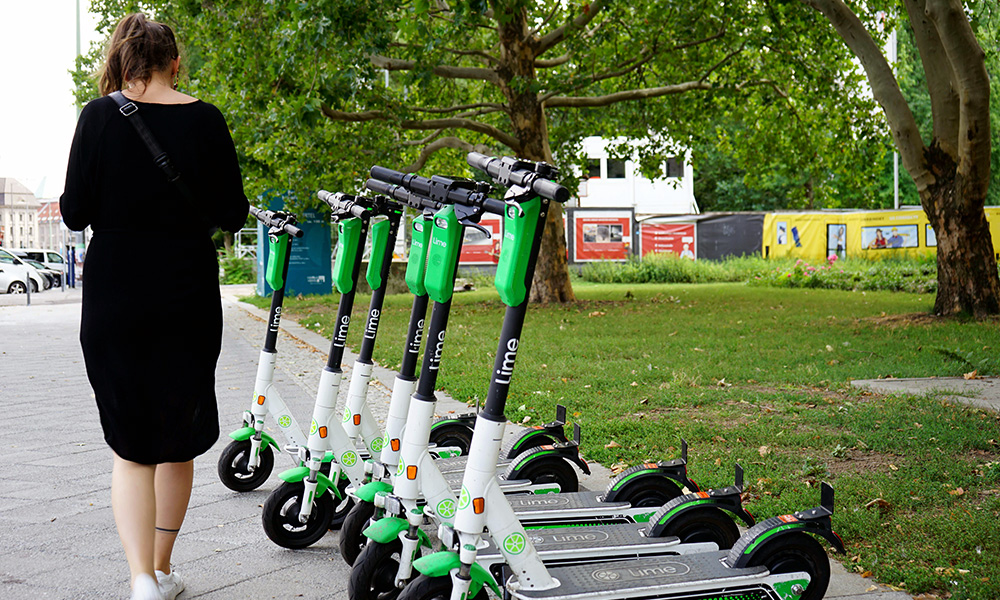
A UBC Okanagan study created a demand model for e-scooter use in the City of Kelowna, determining the most popular times and areas for their use. Photo by Vince Jacob on Unsplash.
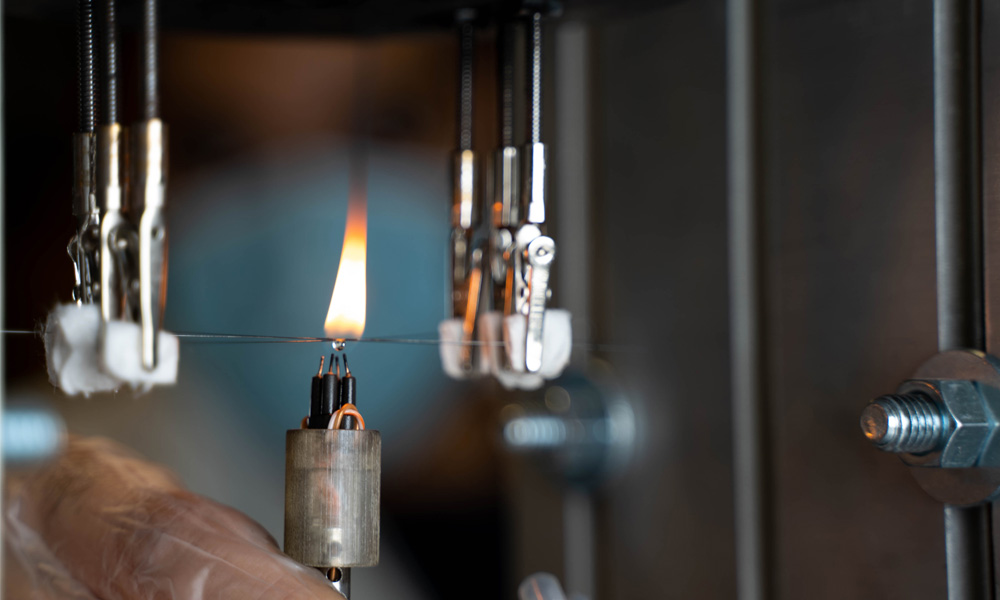
A droplet of fuel mixed with nanomaterials is ignited during an experiment in UBCO’s Combustion for Propulsion and Power Lab.
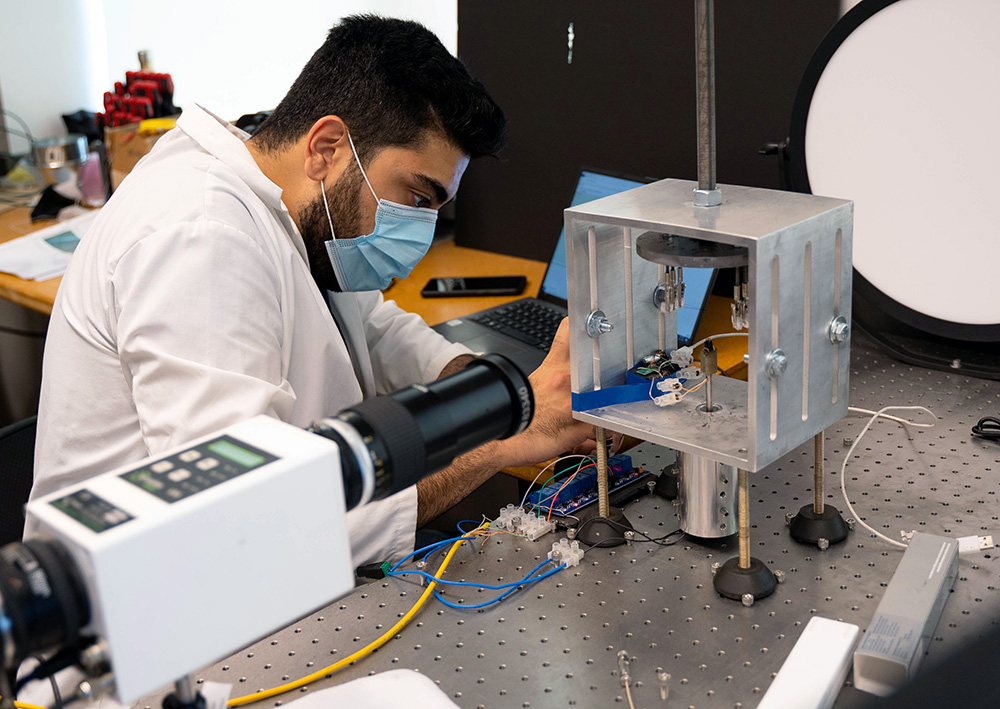
UBCO researcher Sepehr Mosadegh tests the ignition delay and burn rate of fuel mixed with graphene oxide with the hopes of creating a greener, but more powerful, aircraft fuel.
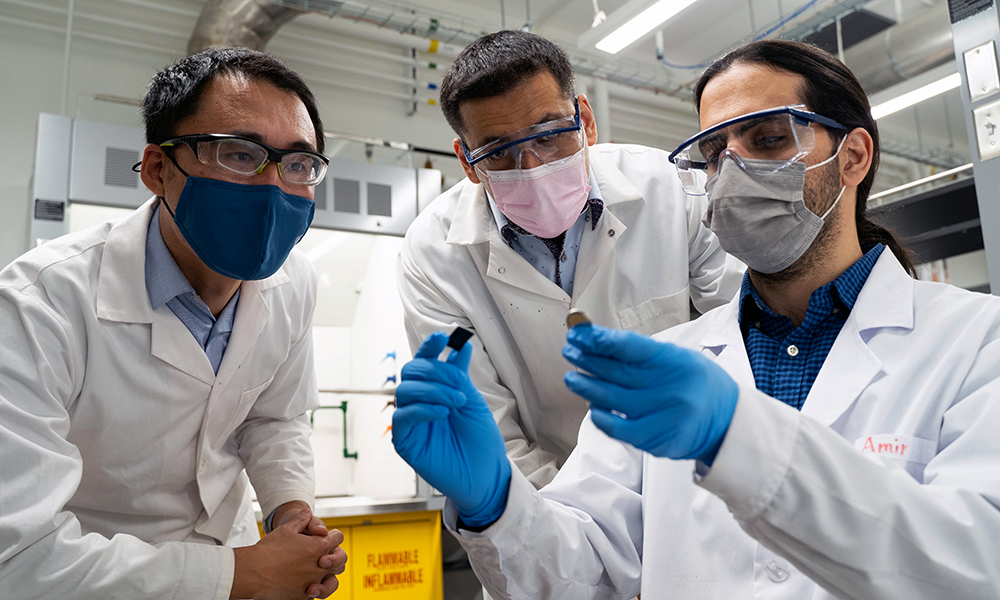
UBCO School of Engineering researchers Mohammad Arjmand, Jian Liu and Amir Ahmadian examine a conductive polymer nanocomposite sample, created from non-recyclable plastic and rubber waste, that can be used for electrical applications.

UBC Okanagan researcher Saeed Mohammadiun’s work involves reviewing marine oil spill management including how computational techniques based on real-time data can be applied to an effective oil spill response.
What are some of the key takeaways from your latest paper when considering the recent marine oil spill in California?
Oil spills are tragic events and may have catastrophic environmental, human health, and socio-economic consequences; in California, local authorities are calling it an “environmental catastrophe.” Even small-scale incidents may concern stakeholders, such as the recent incident in Bella Bella, BC, which has greatly affected the socio-economic status of the local indigenous community. The spilled oil may cause drastic consequences for local economies such as tourism and fisheries. One essential step to minimize consequences of oil spills is to enhance the response preparedness by employing advanced scientific techniques such as remote sensing and data mining. Intelligent computational techniques can be used along with advanced detection and monitoring methods, such as remote sensing, to facilitate an effective and timely oil spill response. We have critically reviewed recent articles in this field and suggested a holistic framework for effective management of oil spills.How does marine oil spill management (MOSM) minimize the impacts of oil spills?
MOSM can broadly cover multiple components such as oil spill detection and monitoring, risk assessment, response method selection and process optimization, and waste management. An effective MOSM, based on appropriate computational-technique-based tools, can consider both proactive and reactive practices for oil spill prevention and also mitigate adverse impacts of an oil spill if it happens. The three major benefits of an effective MOSM are the ability to detect oil spills in a timely manner, conduct the most appropriate oil spill response and reduce amounts of oily waste generated from response operations. An effective MOSM ultimately leads to minimizing the impacts of spilled oil.Describe the role of robust computation techniques based on real-time data in reducing oil spill impacts
One important component of MOSM is the response operation, which aims to contain and clean up the spilled oil and contaminated area before any significant adverse environmental and economic impacts can occur. Response to an oil spill is a time-sensitive and complex task that is significantly reliant on available data, resources and decisions made. Another significant challenge is the fact that collected oily wastes can be up to 10 times more than the original oil spill volume. Oily waste management is usually the bottleneck of all clean-up operations due to limitations in local resources including storage infrastructure and transportation facilities. Inappropriate management of generated oily waste may exacerbate the situation because of secondary contamination. The application of intelligent computational techniques is essential to help stakeholders make timely and suitable decisions based on limited data. A real-time computational-based tool should be able to systematically find the most appropriate management practices by taking a considerable number of influential factors into account.You reviewed similar research for the past 10 years. What reoccurring themes did you discover?
The risk of oil spills has increased by growing marine oil exploration and transportation activities. This trend can also be seen in arctic and sub-arctic waters under the effect of climate change, such as the Canadian Arctic, which has seen a significant increase in ship traffic and oil exploration activities in recent years. It is estimated that about two million tons of oil enter the marine environment every year around the world. Application of artificial intelligence and soft computing techniques in oil spill management has been a new trend in this research area due to better data availability and advancement in computational techniques. Better meteorological and oceanic data, better satellite image access, advances in oil spill trajectory simulators as well as progress in artificial intelligence and soft computing techniques have collectively increased the number of studies in this field. There is still a dire need for better real-world oil spill data to enhance the performance of intelligent decision-making tools.What role can artificial intelligence and machine learning play in minimizing the impacts of oil spills or improve oil spill response?
Both can play an important role concerning various components of oil spill management—from timely detection in remote areas to optimal response selection and waste management. An appropriate oil spill management strategy should be determined based on a significant number of factors, such as the dynamic characteristics of spilled oil and environmental conditions. Remote sensing methods can be integrated with artificial intelligence techniques, analyzing features of images, to accurately detect and monitor oil spills in offshore and onshore regions. After the detection, it is usually necessary to respond to an oil spill immediately. To this end, artificial intelligence and machine learning techniques can considerably facilitate the decision-making process by analyzing previous oil spill data and subtle patterns that are often hidden in the data. These intelligent tools facilitate the instant selection of the most suitable response method and its operational process. In other words, machine learning can use previous oil spills to help manage future incidents. Also, the volume of generated oily waste can be minimized by the application of intelligent computational techniques, because the optimal oil spill response also takes waste management into the consideration. Mohammadiun’s research was published recently in the Journal of Hazardous Materials. The paper is part of the Multi-Partner Research Initiative (MPRI), supported by Fisheries and Oceans Canada. The MPRI aims to help the oil spill response industry and regulators to enhance response preparedness in Canadian waters.
A UBCO researcher has created a framework that will enable cities to reduce energy consumption while keeping homes cool during hot summer months.

Using forecasted energy consumption for the next 30 years, UBCO researcher Dr. Mohammad Al Hashmi is looking at environmentally friendly ways to cool homes.
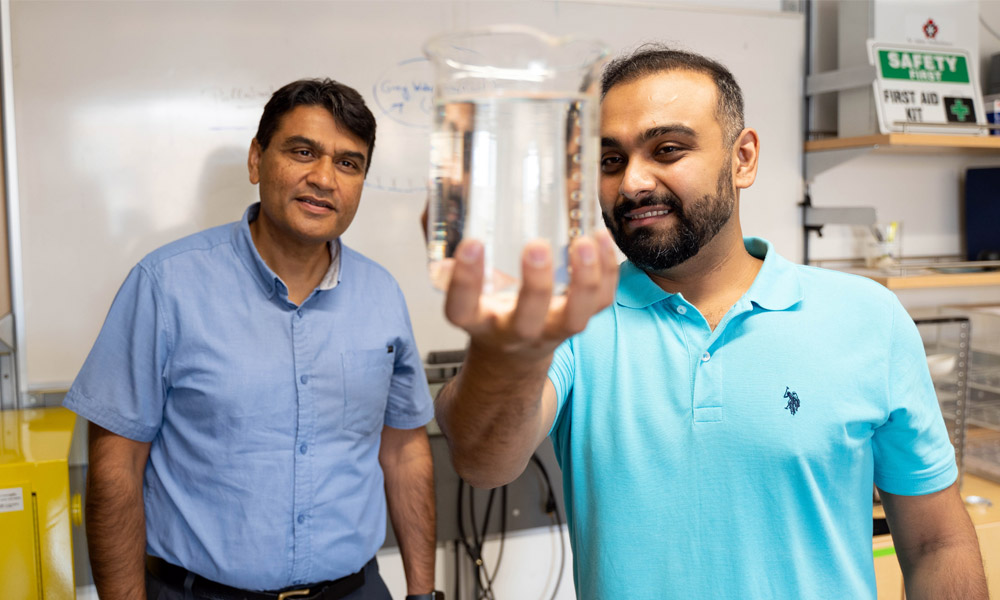
Researchers in UBCO’s School of Engineering Rehan Sadiq and Haroon Mian have developed a new method for testing drinking.
